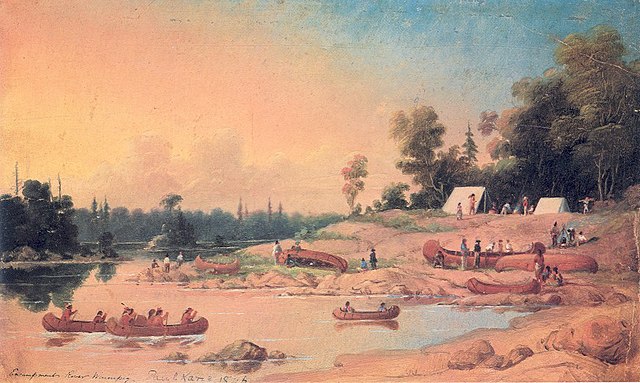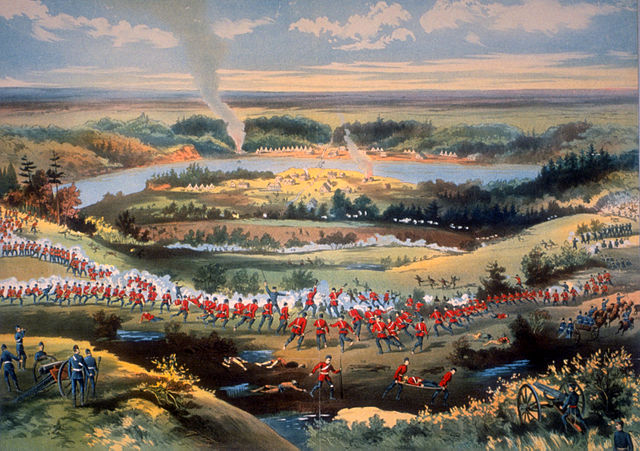Fur brigades were convoys of canoes and boats used to transport supplies, trading goods and furs in the North American fur trade industry. Much of it consisted of native fur trappers, most of whom were Métis, and fur traders who traveled between their home trading posts and a larger Hudson's Bay Company or Northwest Company post in order to supply the inland post with goods and supply the coastal post with furs.
While this famous painting by Frances Anne Hopkins portrays voyageurs, the regular canoe brigades were often manned by natives, operating the same way.
Paul Kane's Encampment shows a canoe brigade camp on the Winnipeg River in June 1848 being visited by a group of Saulteaux
A brigade of York boats at a portage by Peter Rindisbacher in 1821
Brigade of York boats camping on Lake Winnipeg by Peter Rindisbacher in 1821 showing sails being used as boat coverings.
The Métis are an Indigenous people whose historical homelands include Canada's three Prairie Provinces, as well as parts of British Columbia, the Northwest Territories, Northwest Ontario and the northern United States. They have a shared history and culture, deriving from specific mixed European and Indigenous ancestry, which became distinct through ethnogenesis by the mid-18th century, during the early years of the North American fur trade.
Contemporary lithograph of the Battle of Batoche
The Trapper's Bride by Alfred Jacob Miller, 1837
Métis fur trader, c. 1870
Métis drivers with Red River carts, c. 1860








